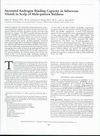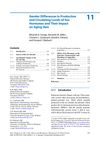Different Levels of 5α-Reductase Type I and II, Aromatase, and Androgen Receptor in Hair Follicles of Women and Men with Androgenetic Alopecia
September 1997
in “
Journal of Investigative Dermatology
”

TLDR People with hair loss have more androgen receptors and enzymes in certain follicles, with men and women showing different patterns.
This study found that people with androgenetic alopecia have higher levels of androgen receptors and 5α-reductase type I and II in frontal hair follicles, while higher levels of aromatase were found in occipital follicles. Men with AGA have higher levels of 5α-reductase type II and androgen receptor in their hair follicles, while women with AGA have higher levels of aromatase and 5α-reductase type I. Women have lower levels of 5α-reductase type I and II, but higher levels of cytochrome P-450-aromatase in their frontal hair follicles compared to men.


